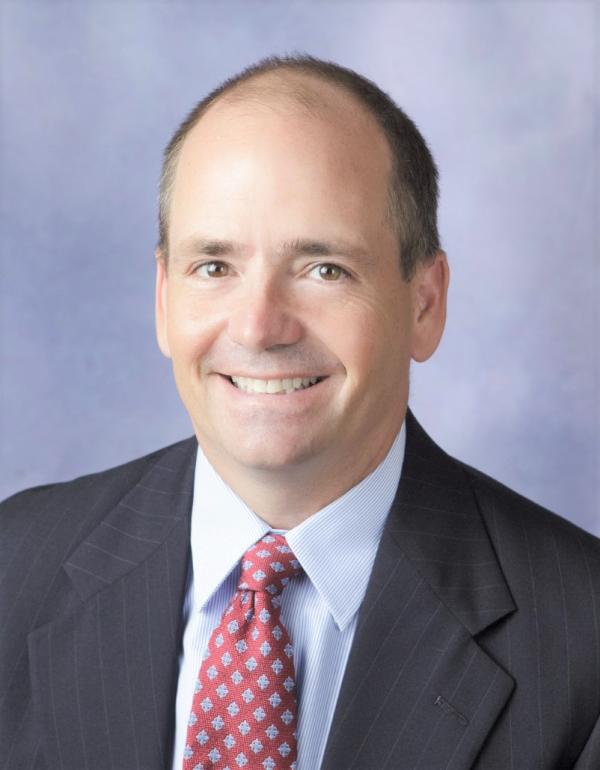By Rich Wiggins, CFA, CAIA, Managing Editor and Senior Advisor, Portfolio for the FutureTM
It’s been a crazy year. Crypto became part of the mainstream, Gamestop became a global sensation and NFTs took the world by storm. 2021 was certainly one for the record books. Everybody’s the Great Gatsby because you didn’t have to be good: Anyone who bought in March 2020 is up between 60%-150%. Calendar year or June-to-June, it’s been a great year for portfolios with alternative assets: Endowments and foundations are reporting wicked >+50% returns. Bloomberg even has an index that calculates the rising and falling wealth of the world’s billionaires in real-time.
Not surprisingly, the year’s ‘Most Read’ articles on Portfolio for the FutureTM address Cryptocurrencies and Digital Assets. If you invest in Bitcoin and/or Ethereum, check out this site. Nikolay Zvezdin, CAIA, and founder of Alter Securities Exchange came up with a way to make Bitcoin ‘more’ or ‘less’ volatile than the underlying asset. A New Way to Trade Bitcoin and Hedge Risk describes ‘Tranched Value Securities’ which shape the security’s return using asset values rather than cash flows like typical structured credit. Even if you think cryptocurrencies are the ultimate fiat currency, the article is worth a read because Nikolay’s planning on doing the same thing for regular equities i.e. carving up Tesla into ‘safer’ and ‘risker’ shares. Why is this a big deal? Because tranched value securities are like options with no expiration. Think about it.
Don't Just Buy the Dip - Use DeFi Instruments To Trade Crypto in Bull and Bear Markets was also widely read. Tokenization and NFTs are hugely popular. Evan Cohen Co-Founder of Vincent contributed Investing in NFTS and Why It Matters which is a top pick for our readers, but looking a lot like Seabiscuit coming down the backstretch. If you want to read our most popular article, this is my bet to finish up as the #1 article in 2021. Winner-winner-chicken-dinner!
I don’t remember when I first heard about NFTs but I definitely thought it was a joke. My immediate reaction was (and still is), “You’re kidding me, right? Why would somebody pay money for a GIF?” From what I can tell, you don’t really ‘own’ the picture: You don’t get the copyright if you buy the NFT, have zero legal rights if the NFT issuer issues more NFTs featuring the same artwork, and you can’t publicly display your NFT or make any derivative works from it.
It is – this is so obvious – the stupidest idea ever. Just like eBooks. I am the wormiest of bookworms and I knew right away that Bezos’ idea had no future. A library is a kind of magic box. The solemn hush of the stacks, moving from one dark row to another and breathing the air of books, my heart races. Who doesn’t love reading marginalia? The humorous jots and tittles that people have written in the margins are the best part of most books and you can’t get that from a Kindle. And there’s not one Moby-Dick. There are dozens of editions, some with different chapters and different wording at over 700 places. My favorite is the 1930 edition by Chicago Lakeside Press and illustrated by Rockwell Kent. It’s a grand production, printed in three oversized and beautiful volumes. I can’t help but hold it up to my cheek and kiss it! That’s right, I’m a book kisser.
Obviously I was wrong. I thought I knew about books. Bezos became the richest man in the world and I’m a white whale smooching nobody. And age isn’t making me any wiser because Collins Dictionary dubbed "NFT" its word of the year and some dude named Mike Winkelmann — who calls himself ‘Beeple’ — recently sold an NFT at Christies for $69 million smackers. His record-smashing blockbuster NFT “Everydays” looks like a garden-variety collage to me. This is the craziest thing that I have witnessed but I will play along and continue to post more content on the topic. If you follow my lead, you’re likely to be wearing the green track suit of the poor in Squid Games next year so we’ve already lined up some ringers for next year.
We’ve got new stuff on virtual real estate, the metaverse, and how value accrues to tokens coming from Grayscale and insights from IDX on yield harvesting and how to replace a 529 with NFTs. I love all art – literature, paintings, ideas – and old-school art is getting a lot of clicks too. Check out Investing in the Art Market: A $1.7 Trillion Asset Class by Mike Parsons at Masterworks.io. Not only is the overall asset class interesting but there are sub-markets for each artist as well. Who knew?
I’m a risk & strategy guy so we’ll have more great content on risk, convexity, cross-asset correlation, and tail risk strategies from Kai Wu of Sparkline Capital, Man Numeric, Hossein Kazemi, Ph.D., CFA, CAIA Association, FDP Institute, and Isenberg School of Management, Keith Black, Program Director for the Financial Data Professional (FDP), Ashby Monk and Dane Rook of the Stanford Global Projects Center, and others. In 2022, we’ll take an even deeper look at Bad Math in the Investment Industry with Michael Edesess.
Digital assets are here to stay so we’ll continue to post the latest content on the correct valuation models to use and how all this does – and doesn’t – fit into modern portfolio theory. We’ll have more on diversification and the struggle with stocks dominating, the shift away from alpha and towards beta and how retirees need to think through the decumulation phase of retirement.
CAIA’s focus is on asset allocators so we’re always studying the garden-variety 60/40 allocation i.e. “What happens if you add crypto to a 60/40?”, “What happens if you replace the bond allocation with Alts?”and lots more. The most important tagline for the Association underpins the entire mission, CAIA seeks to teach investment professionals to Think Like an Allocator. You will always need good musicians, but a good conductor makes the song fit together. CAIA is also about new asset classes and learning about them so new approaches to due diligence is a focus of ours. The Standards Board for Alternative Investments contributed an excellent piece on operational due diligence for crypto assets.
A few years ago, CAIA rose to the challenge of upskilling the traditional investment analyst and helping them understand the evolving world of data science through the launch of the Financial Data Professional (FDP) Charter. You can expect even more content on the topic in 2022. It seems that every manager is claiming they use data science techniques, like machine learning, but are they really? Some folks are already Raging Against the Machine(washing).
Alternative data use cases are exploding. Earlier this year, we partnered with Ronan Crosson, CFA at Eagle Alpha to deliver a series of articles and webinars on the use of alternative in one of the most opaque areas of the market: private equity. In the first article in our alternative data series, we discussed how private equity firms are behind public equity firms when it comes to the adoption of alternative data, and we proposed some practical steps for private equity funds looking to build a strategy for working with alternative data. We also explored the topic of sourcing in private markets, discussing some of the challenges and suggesting some practical solutions. We took a look at new applications such VC firms like EQT Ventures use alternative data in their neural network program “Motherbrain” to help them identify deals earlier, as well as post-acquisition.
Those of you who’ve read my stuff before joining CAIA know that I like to tell it like it is: “It’s not the sweater that makes you look fat.” So I wasn’t really sure how this Managing Editor gig would go down. I asked, “Are we the cigarette lobby? Can I turn a gimlet eye on something or do I have to suck up to everybody?” Bill Kelly, John Bowman and Aaron Filbeck assured me, “We know who you are. Just be yourself.” And I’ve been impressed not only by my own freedom of critical opinion but theirs as well. We tell it like it is – not the aspirational way we want it to be. That’s how I like to roll and and I’m really happy to be part of the team. This point of view was evident in CAIA’s coverage of ESG and SPACs in 2021.
We covered the mechanics in To SPAC or Not To SPAC and The Case for SPACs as well as shared our opinions. Bill Kelly contributed – SPAC-a-Mole and A View Through WRBY Readers. We’re not thundering clear sanity against their insanity but politely pointing out investors need to be cautious and do their due diligence.
The same can be said for ESG where John Bowman, CFA made the astute observation that the ESG label needs to be dismantled because, while the underlying factors and issues are material and important, the wrapper that jams E, S, and G together becomes a jumble of unmeasurable concepts. In his words, if we seek to measure everything, we measure nothing. On the same topic, frequent contributor Aaron Filbeck, CAIA, CFA, CIPM, FDP tackled issues of ESG greenwashing and ratings, the drawbacks of industry pressure that causes asset owners and managers to prioritize box-checking over improving portfolio outcomes, and how these stakeholders can better communicate expectations with one another. CAIA, in partnership with Nuveen, also hosted a thought-provoking webinar series organized exclusively for the benefit of institutional investors across the world.
This year brought a lot of interesting topics to the forefront for CAIA Members: digital assets, ESG, machine learning, and portfolio construction but we’ll be moving on from the past and looking instead to the future. In early 2022, CAIA will be launching their second seminal piece, Portfolio for the FutureTM - a follow up to the Next Decade of Alternative Investments and an inspiration for this blog’s title. The five marks that define this portfolio can be found here, in the teaser article released a few weeks ago.
A special thanks to our regular contributors like Nic Rabener, CAIA (Building a Long Volatility Strategy Without Using Options), Chris Schelling (What About Beta, The Demise of Alpha) and Will Kinlaw , CFA (Private Equity and the Leverage Myth).
It’s been our pleasure to share this content with you and hope that you’ve enjoyed it as much as we did. It’s been a wonderful year.
About the Author:
Richard Wiggins is a Managing Editor/Senior Advisor, Portfolio for the FutureTM. The CAIA Association is the professional body for the alternatives industry with a mission to improve investment and societal outcomes for investors.

-------------------------------------------------------------------------------------------------------------------------------




